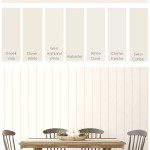What Paint to Use for Interior Wall Murals
A wall mural can be a beautiful and impactful addition to any interior space, transforming a simple wall into a captivating work of art. However, choosing the right paint for your mural is crucial for achieving the desired look and ensuring its longevity. This article will explore the different types of paint suitable for interior wall murals, providing a comprehensive guide to help you select the best option for your project.
Acrylic Paint: The Versatile Choice
Acrylic paint is a popular choice for interior wall murals due to its versatility, durability, and ease of use. It dries quickly, making it ideal for multi-layered projects, and it can be thinned with water to create washes or blended to achieve different effects. Acrylic paint is also water-resistant and fade-resistant, making it suitable for long-term use. Additionally, it comes in an extensive range of colors, allowing for limitless creative possibilities.
Acrylic paints can be further categorized into two types: artist- grade and craft-grade. Artist-grade acrylics are known for their high pigment concentration, resulting in vibrant colors and excellent coverage. However, they tend to be more expensive. Craft-grade acrylics offer a more budget-friendly option, but they may have a lower pigment concentration and might not offer the same level of vibrancy.
Latex Paint: A Durable and Eco-Friendly Option
Latex paint is another excellent choice for interior wall murals, particularly for large-scale projects. Latex paints are water-based, making them both environmentally friendly and easy to clean up. They also provide a smooth, durable finish and excellent adhesion to various wall surfaces. Latex paints offer a range of finishes, including flat, matte, satin, and gloss, allowing you to choose the best option for your desired aesthetic.
Latex paints are generally less expensive than artist-grade acrylics, making them a practical option for budget-conscious projects. However, they might not offer the same level of detail and color vibrancy as acrylics. To ensure the best results, it's important to use a high-quality latex paint specifically designed for murals or decorative painting.
Specialty Paints: Expanding Creative Horizons
Beyond acrylic and latex paints, several specialty paints can enhance your mural creation. These options offer unique properties that can add special effects or textures to your artwork.
Here are some examples:
- Metallic Paint: Creates a shimmering, luxurious effect, bringing a touch of glamour to your mural.
- Gesso: A primer that can be used to create textured surfaces or to prepare a canvas for painting.
- Glaze: A transparent paint that can be used to create a variety of effects, from subtle shading to bold highlights.
- Crackle Medium: Creates a vintage, distressed look by causing the paint to crack and create a textured finish.
Consider using specialty paints to add dimension and depth to your mural. These paints can complement your primary paint choice and create a unique visual effect.
Factors to Consider When Choosing Paint for Your Mural
Selecting the right paint for your interior wall mural involves considering several factors that will affect the overall outcome of your project.
Here is a list of factors to weigh:
- The size and scale of your mural: For large murals, latex paint might be a more practical choice due to its ease of application. For intricate details and smaller murals, acrylic paint might be more suitable.
- The style and theme of your mural: The style and theme of your mural will influence the best paint choice. For example, a realistic portrait might require the rich pigmentation of artist-grade acrylics, while a whimsical abstract mural could utilize craft-grade acrylics or latex paint.
- The surface you will be painting on: Different wall surfaces require different types of paint. For example, textured walls might require a paint with good adhesion, while smooth walls can handle a wider range of paint choices.
- Your budget: Acrylic and latex paints offer a range of price points, so consider your budget when making your decision.
- Your experience and skill level: Acrylic paint is generally considered easier to work with for beginners, while latex paint may require more experience for optimal results.
By thoughtfully considering these factors, you can make an informed decision about the best paint to bring your mural vision to life. Experimenting with different paints and techniques can help you discover the best options for achieving your desired results.

Inspiring Wall Mural Painting Designs

Inspiring Wall Mural Painting Designs
Interior Stylist Paints Nature Inspired Murals For Clients Photos

Inspiring Wall Mural Painting Designs

Painting A Diy Wall Mural Young House Love

10 Mural Tips For Artists The Paint Spot Art Supplies And Classes Edmonton Painting

What Is A Wall Mural Limitless Walls Design Blog

Inspiring Wall Mural Painting Designs

Mural Wall Painting Designs Unleash Your Creativity With Inspiring Ideas

Is It A Good Idea To Get An Indoor Wall Painted With Mural Picture Or Scenery Quora
Related Posts








